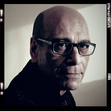Michael Gallagher's Blog - Posts Tagged "lincoln"
Why the Victorians saw ghosts: a séance in the White House
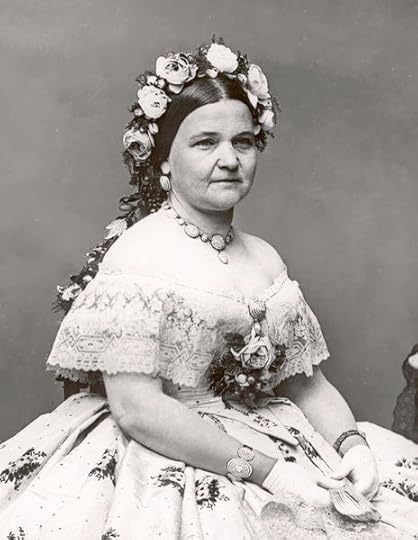 While I was researching my novel,
The Bridge of Dead Things
, I came to understand that the Victorian vogue for spiritualism did not happen in a vacuum. It grew out of a very specific culture, at a particular point in time, and it fulfilled a number of surprisingly different needs. This is the third in a series of posts that examines various influences on the development of spiritualism.
While I was researching my novel,
The Bridge of Dead Things
, I came to understand that the Victorian vogue for spiritualism did not happen in a vacuum. It grew out of a very specific culture, at a particular point in time, and it fulfilled a number of surprisingly different needs. This is the third in a series of posts that examines various influences on the development of spiritualism.In the early 1860s, Washington, D.C. was not the place that we picture today. The Washington Canal, which flowed into the Potomac River a little to the south of the White House, was used as a cesspit and sewer, the stench of which permeated the presidential mansion every summer. One contemporary summed it up neatly: "The ghosts of twenty thousand drowned cats come in nights through the South Windows". Pestilence reigned, and not even the White House was exempt from its grip, as Abraham Lincoln and his wife, Mary Todd Lincoln, discovered to their cost when their third son, Willie, contracted typhoid fever and died in the February of 1962.
By the start of June, as summer arrived, Mary Lincoln insisted that the family quit the city and relocate to their favourite retreat, a former plantation a few miles north of the capital that had been redeveloped by the banker George Riggs as an estate to house former military men: The Soldiers' Home. It was here that they stayed until mid-November, in the humbly-named but really rather grand Riggs Cottage. Although the cottage was light and airy, as the estate was set on a higher elevation than the neighbouring city, it was often far from peaceful. In addition to the braying of nearly two thousand mules stabled nearby, there was also the din of drums, rifles and band practice to contend with from Lincoln's hundred-strong presidential guard.
Despite the noise and the disruptions of war, the Lincolns entertained regularly. One particular guest that summer, at Mary's invitation, was a man calling himself Lord Colchester, a trance medium who claimed to be the illegitimate son of an English duke. In her desire for some form of contact from her beloved son, Willie, and her second-born, Eddie, who had died some years earlier, Mary was only too keen to avail herself of his services. And so she arranged for a séance to be held in the Riggs Cottage library.
As the participants seated themselves around the table, Colchester produced a number of musical instruments—a banjo, some bells and a drum—and laid them out on top. Everybody held hands and the lights were extinguished. At first nothing happened. Then came some loud raps, some scratching sounds, the twang of the banjo. Strands of hair were pulled; people's skin was pinched. Mary was delighted.
Lincoln was sufficiently concerned by this séance to ask Dr Joseph Henry, first Secretary of the Smithsonian Institute, to investigate. Unable to determine exactly how Colchester managed to produce his phenomena, he turned to the journalist, Noah Brooks, for help. Brooks, who, after the death of his wife earlier that year, had been sent by the Sacramento Daily Union to cover the Lincoln administration, had been readily accepted into the Lincoln household as if he were a long-lost friend. And quite a friend he proved to be.
That evening in the dimly-lit library, with the medium's selection of musical instruments set out before them, the company once more joined hands and again the lights were extinguished. Suddenly the sound of a drum was heard, hovering high above their heads. This is Noah Brooks's own account of what happened next:
"Loosening my hands from my neighbors', who were unbelievers, I rose, and, grasping in the direction of the drumbeat, grabbed a very solid and fleshy hand in which was held a bell that was being thumped on a drum-head. I shouted, 'Strike a light!' My friend, after what appeared to be an unconscionable length of time, lighted a match; but meanwhile somebody had dealt me a severe blow with the drum, the edge of which cut a slight wound on my forehead. When the gas was finally lighted, the singular spectacle was presented of 'the son of the duke' firmly grasped by a man whose forehead was covered with blood, while the arrested scion of nobility was glowering at the drum and bells which he still held in his hands."
Undeterred by the events at the Soldiers' Home, on her return to the White House in November Mary sought solace at the two-storey Georgetown home of a Mr and Mrs Cranston Laurie and their daughter Belle, at what was then 21 First Street (3226 N Street today). Mr Laurie was chief clerk of the Post Office Service and many of his spiritualist acquaintances held equally high government posts; Mrs Laurie and her daughter were both trance mediums of some renown. On New Year's Day 1863, Mary Lincoln revealed to a friend that she had attended a number of séances there, and that Mrs Laurie had made wonderful revelations to her about her dead son, Willie, and had received communications that her husband's cabinet was full of enemies plotting against him for their own ends.
However, according to Nettie Colburn Maynard in her memoir "Was Abraham Lincoln a Spiritualist?", published many years later in 1891, it was Nettie herself who acted as medium, and not Mrs Laurie or Belle, on the evening of February 5th 1863 when President Lincoln accompanied his wife to one of the Lauries' popular séances. When Lincoln asked the spirit she had channelled about the current situation regarding the war, she writes that he received the following reply:
'…That a very precarious state of things existed at the front, where General Hooker had just taken command. The army was totally demoralized; regiments stacking arms, refusing to obey orders or to do duty; threatening a general retreat; declaring their purpose to return to Washington. A vivid picture was drawn of the terrible state of affairs, greatly to the surprise of all present, save the chief to whom the words were addressed. When the picture had been painted in vivid colors, Mr. Lincoln quietly remarked: "You seem to understand the situation. Can you point out the remedy?"'
The remedy suggested was that he go to the front in person, taking with him his wife and children, and, avoiding the high-grade officers, seek out the tents of private soldiers and enquire into their grievances. In other words, that he should show himself to be "the Father of the People".
Although Nettie Colburn Maynard may have been embroidering the truth somewhat (many if not most of her claims are rather doubtful, and there are reports—though these too are dubious—that it was the Lauries' daughter Belle who acted as medium on that night), in the simple matter of the president's attendance at this séance, I think this at least is true, for something certainly triggered the extraordinary event that came next. Barely seven weeks later, on the 23rd of April, 1863, President Lincoln—a lifelong skeptic—organised his own séance…in the White House.
The evening was attended by his wife, a reporter from the Boston Gazette, two of his Cabinet Secretaries, Stanton and Welles. His medium of choice was a man named Charles E. Shockle. The séance began with a few loud raps and a false start or two, but eventually Shockle came through with a message from Henry Knox, George Washington's Secretary of War: "Haste makes waste, but delays cause vexations". When Lincoln asked when the revolt would be put down, Knox replied that a lively discussion held between Washington, Franklin and Napoleon had produced a variety of answers, which he then went on to summarise for the president. This is reportedly Lincoln's rather wry response:
"Well, opinions differ among the saints as well as among the sinners. They don't seem to understand running the machines among the celestials much better than we do. Their talk and advice sound very much like the talk of my cabinet."
It was a tongue-in-cheek skeptic's comment. Quite why Lincoln held his séance is anyone's guess, but the inclusion of a reporter from the Boston Gazette among the party—and not his trusted friend Noah Brooks—suggests that he may have contrived it as a publicity stunt, and one in which he was unwilling to involve his friend. And yet the article that subsequently appeared in the Gazette was reprinted in Brooks's Sacramento Daily Union some two months later.
Mary Todd Lincoln was to remain in the thrall of spiritualism for the rest of her life, and we will be revisiting her occasionally, as she still has a part to play in its story.
Next month: The Civil War—how the war itself and an emerging technology both contributed to the rise of spiritualism
Find out more at michaelgallagherwrites.com
Image:
Mary Todd Lincoln (1818-1882)
Photograph by Mathew Brady (1822-1896), 1861
Published on September 01, 2013 05:34
•
Tags:
lincoln, mary-todd-lincoln, mediums, noah-brooks, seances, soldiers-home, spiritualism, spiritualists, victorian-mediums, victorian-seances, white-house
Why the Victorians saw ghosts: Caught on camera—the darker role that photography played in spiritualism
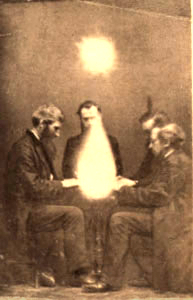 While I was researching my novel,
The Bridge of Dead Things
, I came to understand that the Victorian vogue for spiritualism did not happen in a vacuum. It grew out of a very specific culture, at a particular point in time, and it fulfilled a number of surprisingly different needs. This is the eighth in a series of posts that examines various influences on the development of spiritualism.
While I was researching my novel,
The Bridge of Dead Things
, I came to understand that the Victorian vogue for spiritualism did not happen in a vacuum. It grew out of a very specific culture, at a particular point in time, and it fulfilled a number of surprisingly different needs. This is the eighth in a series of posts that examines various influences on the development of spiritualism.It probably started out as a happy accident: a glass plate that had previously been exposed but not yet developed was placed back into the camera and exposed for a second time. The resulting double-exposure, when printed, would have produced a somewhat ghostly effect. With a certain amount of pre-planning and a little tweaking here and there, the effect could be heightened and repeated time and time again. Such is undoubtedly the case with the American William H. Mumler (1832-1884), who started out as an amateur photographer in Boston. Realising that he could make his living by photographing New England’s many mediums in the company of assorted spirits, he quit his job as an engraver and moved to New York in the early 1860s to take up his particular brand of photography full time. His most famous photo appears to show Mary Todd Lincoln flanked by the spirit of her dead husband.
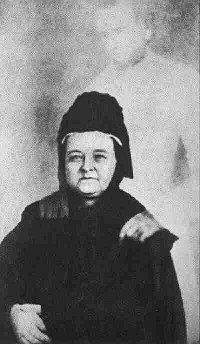
In the April of 1869 Mumler was brought to trial for fraud after it was alleged that he’d broken into houses to steal the portraits of his sitters’ dead relatives. One of the witnesses to testify against him was the showman and entrepreneur P. T. Barnum. Barnum had commissioned the photographer Abraham Borgadus to make a portrait of him accompanied by Abraham Lincoln’s spirit, just like Mary’s, to demonstrate how easily it was that such photos could be faked. The photograph was presented in evidence at the trial. Although Mumler was eventually acquitted, his career as a spirit photographer was over.
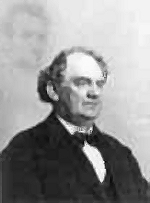
How could people be so gullible? To answer this question it's important to appreciate the naivety of the general public in their ability to read and understand photographs at the time. The following extract is from Statement of a Photographic Man, from Volume 3, Part IV (Street artists) of Henry Mayhew's 1861 work, London Labour and the London Poor. The speaker is a young working-class man from the slums of Lambeth, who, on tiring of busking for his living, borrows money for a camera and darkroom equipment and sets up as a photographer with his mate Jim, though both men lack the technical expertise required. Through trial and error his work gradually improves, but along the way he dreams up a number of hilarious tricks and dodges to mask his failures, one of which, the fobbing-off on impatient customers of hastily-wrapped specimen-photographs taken from his window display, he discusses here:
"…We have made some queer mistakes doing this. One day a young lady came in, and wouldn't wait, so Jim takes a specimen from the window, and, as luck would have it, it was the portrait of a widow in her cap. She insisted on opening, and then she said, 'This isn't me; it's got a widow's cap, and I was never married in all my life!' Jim answers, 'Oh, miss! why it's a beautiful picture, and a correct likeness,'—and so it was, and no lies, but it wasn't of her. Jim talked to her, and says he, 'Why this ain't a cap, it's the shadow of the hair'—for she had ringlets—and she positively took it away believing that such was the case; and even promised to send us customers, which she did.
"There was another lady that came in a hurry, and would stop if we were not more than a minute; so Jim ups with a specimen, without looking at it, and it was the picture of a woman and her child. We went through the business of focussing the camera, and then gave her the portrait and took the 6d [half a shilling]. When she saw it she cries out, 'Bless me! there's a child: I haven't ne'er a child!' Jim looked at her, and then at the picture, as if comparing, and says he, 'It is certainly a wonderful likeness, miss, and one of the best we ever took. It's the way you sat; and what has occasioned it was a child passing through the yard.' She said she supposed it must be so, and took the portrait away highly delighted.
"Once a sailor came in, and as he was in haste, I shoved on to him the picture of a carpenter, who was to call in the afternoon for his portrait. The jacket was dark, but there was a white waistcoat; still I persuaded him that it was his blue Guernsey which had come up very light, and he was so pleased that he gave us 9d [three-quarters of a shilling] instead of 6d. The fact is, people don't know their own faces. Half of 'em have never looked in a glass half a dozen times in their life, and directly they see a pair of eyes and a nose, they fancy they are their own.
"The only time we were done was with an old woman. We had only one specimen left, and that was a sailor man, very dark—one of our black pictures. But she put on her spectacles, and she looked at it up and down, and says, 'Eh?' I said, 'Did you speak, ma'am?' and she cries, 'Why, this is a man! here's the whiskers.' I left, and Jim tried to humbug her, for I was bursting with laughing. Jim said, 'It's you ma'am; and a very excellent likeness, I assure you.' But she kept on saying, 'Nonsense, I ain't a man,' and wouldn't have it. Jim wanted her to leave a deposit, and come next day, but she never called…"
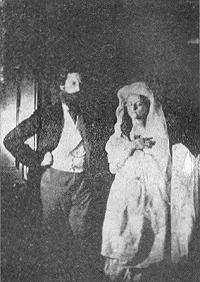
The photographs of the spirit of Katie King, however, stretch credulity to a brand new level. The first set was taken in a hotel room at Florence Cook's request by the reporter W. H. Harrison with an eye to publication in The Daily Telegraph; the rest—the ones we're most familiar with today—were taken by the scientist William Crookes at two private but well-attended soirées in his own home. In both cases neither the negatives nor the prints were tampered with in any way, and, considering the circumstances, it seems unlikely that Crookes (if not Harrison too) set out to perpetrate any fraud. But, studying them, it's hard to imagine that anyone was fooled. The words of Edward William Cox when describing one of Katie's later appearances sum up the situation neatly, "They were solid flesh and blood and bone."
People see what they want to see. The photo you see below is another interesting case in point. It was taken by a sixteen-year-old in 1917 and features her nine-year-old cousin sitting in their garden surrounded by a number of posed, cut-out fairy figures.
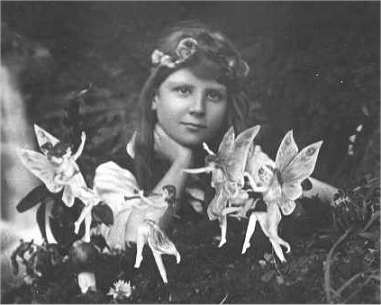
Again, there is no double-exposure or tampering with the print. What you see is exactly what you get. Yet this image was passionately championed by Sir Arthur Conan Doyle, author of the Sherlock Holmes series, who, despite his naivety, was a great believer in spiritualism. And he was not the only person to be taken in. Here is what Edward Gardner, a leading member of the Theosophical Society at the time, had to say: "…the fact that two young girls had not only been able to see fairies, which others had done, but had actually for the first time ever been able to materialise them at a density sufficient for their images to be recorded on a photographic plate, meant that it was possible that the next cycle of evolution was underway."
Frances, the young girl in the photo, finally admitted to the fraud in later life: "I never even thought of it as being a fraud—it was just Elsie and I having a bit of fun and I can't understand to this day why they were taken in—they wanted to be taken in."
Fifty years after Mumler, professional debunkers—often stage magicians who objected to their artistry being brought into disrepute by spiritualist hoaxers—were still at work trying to expose the tricks involved in the production of spirit photography. Here is one of the most recent examples I could find, showing Houdini, one of the greatest escapologists and debunkers of all time, with (yet again) the ghost of Abraham Lincoln, who must surely be the most photographed "spirit" on the planet.

Next time: Ghost-grabbers—tackling the spirits head-on
Find out more at michaelgallagherwrites.com
 Why the Victorians Saw Ghosts – An Illustrated Guide to 19th Century Spiritualism is now available as an ebook. It retails for US$2.99 in most online stores, but you can download it for free. You’ll find details and links on the My Shout page of my website.
Why the Victorians Saw Ghosts – An Illustrated Guide to 19th Century Spiritualism is now available as an ebook. It retails for US$2.99 in most online stores, but you can download it for free. You’ll find details and links on the My Shout page of my website.Images:
Seance conducted by John Beattie, in Bristol, England
Photograph by Eugene Rochas, 1872
Mary Todd Lincoln with the ghost of Abraham Lincoln
Photograph by William H. Mumler, date unknown but presumably prior to 1869
P. T. Barnum with the ghost of Abraham Lincoln, made at Barnum's request
Photograph by Abraham Bogardus, 1869
William Crookes with the spirit of Katie King
Photograph by William Crookes, circa 1873
Frances Griffiths surrounded by fairies
Photograph by Elsie Wright, 1917
Houdini with the ghost of Abraham Lincoln, made at Houdini's request
Photographer unknown, circa 1920-1930
Library of Congress
Published on February 01, 2014 06:14
•
Tags:
barnum, crookes, florence-cook, houdini, lincoln, mayhew, mediums, mumler, pictures-of-ghosts, seances, spirit-photography, spiritualism, spiritualists, statement-of-a-photographic-man, victorian-mediums, victorian-seances

